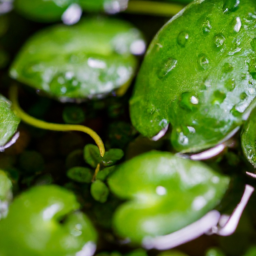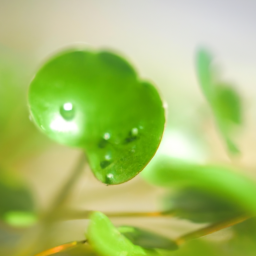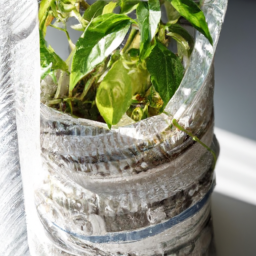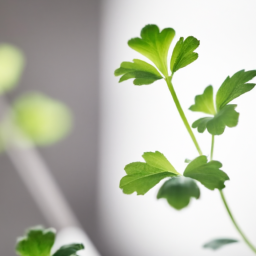
Hey there, fellow plant enthusiasts! Are you looking to add a touch of tranquility and serenity to your home or office space? Well, look no further because we have the perfect solution for you: Aquatic Gardens! In this blog post, we will dive into the world of indoor water plants and explore how they can thrive and flourish in your very own aquatic garden. So, grab your favorite cup of tea and let’s explore the wonders of Aquatic Gardens: Thriving with Indoor Water Plants.
Benefits of Indoor Water Plants in Aquatic Gardens
Indoor water plants not only add a touch of beauty and tranquility to your living space, but they also provide numerous benefits for both your physical and mental well-being. These aquatic wonders not only purify the air but also create a soothing environment that can reduce stress and improve overall mood. In this article, we will explore the various advantages of incorporating indoor water plants in your aquatic garden.
Purification of Indoor Air
One of the most significant benefits of indoor water plants is their ability to purify the air we breathe. These plants act as natural air filters, removing toxins and pollutants from the environment. Through a process called phytoremediation, aquatic plants absorb harmful substances such as formaldehyde, benzene, and carbon monoxide, releasing fresh oxygen into the air. This purification process can significantly improve indoor air quality, reducing the risk of respiratory ailments and allergies.
Furthermore, indoor water plants help to maintain optimal humidity levels in enclosed spaces. As they release moisture into the air through a process known as transpiration, they can combat dryness and prevent the onset of respiratory issues, dry skin, and irritated eyes. By creating a healthier and more comfortable living environment, these plants contribute to our overall well-being.
Additionally, the presence of indoor water plants can reduce the occurrence of sick building syndrome, a condition characterized by headaches, dizziness, and fatigue caused by poor indoor air quality. The natural purification abilities of aquatic plants make them an excellent choice for anyone seeking a healthier and more refreshing living space.
Stress Reduction and Improved Mood
Indoor water plants have a calming effect on our minds, helping to reduce stress and anxiety. The sound of trickling water and the sight of lush greenery can create a peaceful and serene atmosphere, promoting relaxation and a sense of tranquility. Studies have shown that spending time near water, even in indoor settings, can have a positive impact on our mental health.
Furthermore, the act of caring for indoor water plants can be therapeutic in itself. Engaging in activities such as watering, pruning, and maintaining these plants can serve as a form of mindfulness, allowing us to focus on the present moment and find solace in the natural world. The responsibility of nurturing these living organisms can also provide a sense of purpose and accomplishment.
In addition to reducing stress, indoor water plants can improve our overall mood and productivity. The presence of greenery has been linked to increased feelings of happiness, creativity, and concentration. Whether placed in a home office or a living room, these plants can enhance our environment and contribute to a more positive and productive mindset.
Enhanced Aesthetic Appeal
Indoor water plants add a touch of natural beauty and elegance to any space. With their vibrant hues and unique foliage, they can serve as eye-catching focal points or subtle accents, depending on your preference. From delicate floating plants to majestic water lilies, there is a wide variety of aquatic flora to choose from, allowing you to create a visually stunning aquatic garden that suits your style and taste.
Moreover, indoor water plants can be creatively arranged in various containers, such as glass vases, fish tanks, or even decorative bowls. This versatility allows you to experiment with different layouts and designs, transforming your indoor space into a captivating oasis. The combination of water, plants, and natural light creates a harmonious and visually appealing display that will impress both residents and guests alike.
It is important to note that while indoor water plants offer numerous benefits, they do require proper care and maintenance. Adequate lighting, regular watering, and appropriate fertilization are essential to ensure the health and longevity of these plants. By following a few simple guidelines, you can create a thriving aquatic garden that not only enhances your living space but also improves your overall well-being.

Essential Care Tips for Thriving Indoor Water Plants
Introduction
Welcome to the world of aquatic gardens! Indoor water plants can bring life and tranquility to any space, and with the right care, they can thrive and flourish. In this guide, we will provide you with essential care tips to ensure your indoor water plants stay healthy and vibrant. Whether you are a beginner or an experienced plant enthusiast, these tips will help you create a stunning aquatic garden in your home.
Choosing the Right Plants
Before diving into the care tips, it’s important to choose the right plants for your indoor aquatic garden. Consider the lighting conditions, temperature, and size of your space. Some popular indoor water plants include Peace Lily, Pothos, and Lucky Bamboo. These plants are known for their ability to thrive in water-filled environments and are relatively low-maintenance.
When selecting plants, make sure to check their specific care requirements. Some plants may need more sunlight, while others prefer shade. It’s crucial to match the plant’s needs with the conditions in your home to ensure their optimal growth.
Additionally, consider the size of your space. Some water plants can grow quite large, so make sure you have enough room for them to spread out. If you have limited space, choose smaller varieties or consider using hanging baskets to maximize vertical space.
Providing Adequate Lighting
Light is a crucial factor for the growth of indoor water plants. Most aquatic plants require moderate to bright indirect light to thrive. Place your plants near a window where they can receive filtered sunlight throughout the day. Avoid placing them in direct sunlight as it can scorch the leaves and cause damage.
If your space lacks natural light, you can use artificial grow lights specifically designed for plants. LED grow lights are energy-efficient and provide the necessary light spectrum for plant growth. Position the lights a few inches above the plants and keep them on for 10-12 hours a day to mimic natural daylight.
Monitor your plants closely to ensure they are receiving the right amount of light. If you notice the leaves turning yellow or the plant looking weak, it may be an indication of inadequate lighting.
Watering and Nutrient Requirements
Water is the lifeline of indoor water plants, and maintaining the right balance is crucial. Most aquatic plants prefer to be constantly submerged in water, but it’s important to avoid overwatering. Check the water level regularly and ensure it covers the roots without completely submerging the leaves.
Use distilled or filtered water to avoid chlorine and other chemicals that can harm the plants. If you are using tap water, let it sit overnight to allow the chlorine to dissipate. Avoid using water that has passed through a water softener as it may contain excessive salts.
While water is essential, indoor water plants also require nutrients to thrive. You can add liquid fertilizer specifically formulated for aquatic plants to the water once a month. Follow the instructions on the fertilizer bottle and avoid over-fertilizing as it can lead to algae growth and harm the plants.
Maintaining Optimal Temperature and Humidity
The temperature and humidity levels in your home play a vital role in the health of your indoor water plants. Most aquatic plants prefer temperatures between 65-80°F (18-27°C). Avoid placing them near drafts or heating/cooling vents as sudden temperature fluctuations can stress the plants.
Humidity is also important for the well-being of indoor water plants. Most aquatic plants thrive in high humidity environments. If your home has low humidity, you can increase it by placing a tray filled with water near the plants or using a humidifier.
Regularly monitor the temperature and humidity levels in your home and make adjustments as needed to create an optimal environment for your indoor water plants.
Preventing and Treating Common Issues
Like any other plants, indoor water plants can face certain issues. Here are some common problems and their solutions:
1. Algae Growth: Algae can quickly take over your aquatic garden, causing your plants to suffer. To prevent algae growth, avoid overexposing the plants to direct sunlight and maintain a consistent cleaning routine. You can also introduce algae-eating fish or snails to help control the problem.
2. Root Rot: Overwatering can lead to root rot, which can be detrimental to your plants. Ensure proper drainage and avoid water stagnation. If you notice signs of root rot, such as wilting leaves or a foul smell, trim the affected roots and repot the plant in fresh, clean water.
3. Pests: Indoor water plants are generally less prone to pests, but occasionally, you may encounter aphids or mealybugs. Use organic insecticidal soap or neem oil to treat the affected plants. Regularly inspect your plants for any signs of pests and take immediate action.
Conclusion
With proper care and attention, your indoor water plants can thrive and bring beauty to your home. Remember to choose the right plants, provide adequate lighting, water and nourish them properly, maintain optimal temperature and humidity, and address any issues promptly. Enjoy the serenity and elegance of your aquatic garden as it flourishes and becomes a focal point in your indoor space.

Designing a Stunning Aquatic Garden with Indoor Water Plants
Are you ready to transform your indoor space into a mesmerizing aquatic garden? Look no further! In this guide, we will take you through the step-by-step process of designing a stunning aquatic garden with indoor water plants. Get ready to create a serene and captivating oasis right in the comfort of your own home.
Choosing the Perfect Location
The first step in designing your aquatic garden is selecting the ideal location. Consider the amount of natural light your chosen spot receives, as most indoor water plants thrive in bright, indirect light. Avoid placing your garden near drafty windows or heating vents, as extreme temperature fluctuations can be detrimental to the health of your plants.
Additionally, ensure that the chosen location is easily accessible for maintenance purposes. You’ll want to be able to reach your plants easily for watering, pruning, and general care.
Once you’ve found the perfect spot, it’s time to move on to the next step!
Choosing the Right Water Plants
Now comes the exciting part – selecting the perfect water plants for your aquatic garden. There is a wide variety of indoor water plants to choose from, each with its own unique beauty and care requirements.
Consider plants such as the Peace Lily, which not only adds a touch of elegance with its white blooms but also helps purify the air. The vibrant colors of the Betta Fish Plant make it a popular choice for many aquatic garden enthusiasts. The versatile Water Hyacinth is another excellent option, as it floats gracefully on the water’s surface, adding a natural charm to your garden.
When choosing your plants, ensure they are compatible in terms of sunlight and water requirements. This will help maintain a harmonious and thriving ecosystem within your indoor aquatic garden.
Setting Up Your Aquatic Garden
With your location and plants selected, it’s time to set up your aquatic garden. Begin by choosing a suitable container for your water plants. Opt for a container that is deep enough to accommodate the root systems of your chosen plants and has adequate drainage to prevent waterlogging.
Fill the container with clean, dechlorinated water, leaving enough space for your plants to float or be submerged. If desired, you can also add decorative elements such as rocks, pebbles, or driftwood to enhance the visual appeal of your garden.
When placing your plants in the container, ensure they are properly positioned to receive the optimal amount of light. Some plants may need to be anchored or potted, while others can simply float freely. Experiment with different arrangements to create a visually striking design.
Lastly, don’t forget to add a water conditioner to remove any harmful chemicals and provide essential nutrients for your plants. This will help ensure a healthy and thriving aquatic garden.
Congratulations! You have successfully designed your stunning aquatic garden with indoor water plants. Now, all that’s left is to maintain and enjoy the beauty of your creation.
Remember to monitor the water level and quality regularly, ensuring it remains suitable for your plants. Provide adequate lighting and fertilize your plants as needed. Regularly remove any dead leaves or debris to maintain a clean and visually appealing garden.
With proper care and attention, your aquatic garden will become a captivating centerpiece in your home, bringing tranquility and natural beauty to your living space.
So, what are you waiting for? Dive into the world of aquatic gardening and create your own stunning indoor water plant paradise!
Here’s the Summary Snapshot
If you’re looking to add a touch of tranquility and beauty to your home or office space, consider creating an aquatic garden with indoor water plants. These unique and vibrant plants not only enhance the aesthetic appeal of any room, but they also provide numerous benefits for your overall well-being.
Indoor water plants, such as water lilies, lotus flowers, and ferns, thrive in water-filled containers and can be easily maintained with minimal effort. They not only add a pop of color to your space but also improve air quality by releasing oxygen and absorbing harmful toxins. Additionally, these plants create a soothing atmosphere with the gentle sound of trickling water, promoting relaxation and reducing stress levels. Whether you have a small tabletop water garden or an elaborate pond, the presence of indoor water plants will undoubtedly elevate the ambiance and bring a sense of serenity to your surroundings. So, why not dive into the world of aquatic gardens and enjoy the benefits of these beautiful and low-maintenance plants?
Common Questions and Answers:
Q1: What are aquatic gardens and why are they popular for indoor spaces?
A1: Aquatic gardens are indoor gardens that feature water plants, such as aquatic ferns, lilies, or moss. These gardens create a serene and tranquil atmosphere, bringing a touch of nature into your home or office. They are popular because they not only add beauty to indoor spaces but also provide several benefits, including improving air quality, reducing stress, and promoting relaxation.
Q2: What are the key factors to consider when creating an aquatic garden indoors?
A2: When creating an indoor aquatic garden, there are a few important factors to consider. First, you need to choose the right plants that are suitable for indoor conditions, such as low-light or temperature-controlled environments. Additionally, you’ll need to select the right container or aquarium with proper drainage and water circulation. Lastly, it’s crucial to maintain the right balance of light, temperature, and nutrients to ensure the plants thrive.
Q3: How do I care for indoor water plants in an aquatic garden?
A3: Caring for indoor water plants involves a few essential steps. Firstly, you should provide adequate lighting for your plants, either through natural sunlight or artificial grow lights. Regularly check the water temperature and ensure it’s within the recommended range for your plants. It’s also important to monitor the water quality and pH levels, as well as regularly fertilize the plants to supply them with necessary nutrients. Lastly, prune any dead or decaying leaves and keep an eye out for pests or diseases.
Q4: Can I keep fish or other aquatic animals in my indoor aquatic garden?
A4: Yes, you can keep fish or other aquatic animals in your indoor aquatic garden, depending on the size and type of your setup. However, it’s important to research and choose fish species that are compatible with your plants and can thrive in an indoor environment. Ensure you provide appropriate filtration and maintain the water quality to keep your aquatic pets healthy.
Q5: Where can I find suitable indoor water plants for my aquatic garden?
A5: You can find suitable indoor water plants for your aquatic garden at local nurseries, garden centers, or specialized aquatic plant stores. Online retailers also offer a wide variety of water plants that can be conveniently delivered to your doorstep. Before purchasing, make sure to research the specific requirements of the plants and choose ones that are suitable for your indoor environment.
Dr. Olivia Green is a botanist with over two decades of experience in indoor plant cultivation. She holds a Ph.D. in Plant Biology and has dedicated her career to researching plant behavior in controlled environments. Dr. Green is passionate about helping plant enthusiasts master the art of indoor gardening through her extensive knowledge and practical insights.


